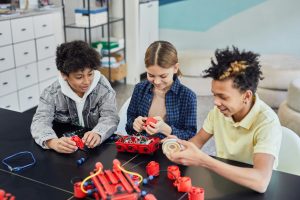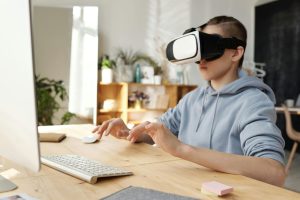The quiet revolution of student-led conferences and personalized learning plans
In today’s increasingly competitive academic landscape, teachers and administrators are constantly seeking innovative ways to empower students and improve their learning experiences. One of the most groundbreaking developments in recent years has been the rise of student-led conferences and personalized learning plans. These methods have been heralded as a quiet revolution in education, providing students with a more active role in shaping their own education and offering a more personalized approach to learning. In this article, we will explore the concept of student-led conferences and personalized learning plans, delving into their benefits and how they are transforming the traditional classroom dynamic.
The Emergence of Student-Led Conferences
Student-led conferences, also known as student-led parent-teacher conferences, have gained popularity in recent years as an alternative to traditional parent-teacher conferences. In a traditional conference, the teacher acts as the primary communicator, providing updates on the student’s progress and discussing areas for improvement. However, in the student-led conference model, the student takes on a more active role, presenting their own progress to their parents and teachers.
While this concept may seem daunting at first, it has been found to have numerous benefits for both students and educators. By taking responsibility for their own learning, students gain a greater sense of ownership and motivation, leading to increased engagement and better academic outcomes. Additionally, by taking on a more active role in the conference, students gain valuable skills in communication, organization, and self-assessment – all of which are crucial in their future academic and professional endeavors.
How Student-Led Conferences Work
The specifics of student-led conferences may vary from school to school, but the general structure remains the same. Typically, students are given a period of time to prepare for the conference, during which they reflect on their progress, goals, and areas for improvement. This may involve creating visual aids such as charts, graphs, or portfolios to showcase their achievements and areas of growth.
During the conference, the student takes the lead, presenting their progress and goals to their parents and teachers. The teacher’s role is to guide the discussion and offer feedback, while the parents act as active listeners, asking questions and providing support. At the end of the conference, all parties come together to discuss future goals and strategies for improvement, laying the foundation for a personalized learning plan.
The Power of Personalized Learning Plans
Personalized learning plans, also known as individualized learning plans, are tailor-made plans designed to meet the specific needs and learning styles of each student. These plans are created collaboratively by students, teachers, and parents, based on the student’s strengths, weaknesses, and interests. By incorporating students’ input into the learning process, personalized learning plans can greatly enhance their academic engagement and overall success.
Benefits of Personalized Learning Plans
The shift towards personalized learning plans has been driven by the recognition that every student learns differently and has unique strengths and challenges. With traditional teaching methods, it can be challenging for teachers to cater to the individual needs of each student. However, with personalized learning plans, students are given the opportunity to take an active role in identifying their learning styles and setting goals that are meaningful to them. This not only empowers students but also allows teachers to better tailor their instruction to meet the needs of each student.
Moreover, personalized learning plans can also improve the overall learning experience for students. By focusing on their strengths and interests, students are more likely to be motivated and engaged, leading to a more positive attitude towards learning. This, in turn, can also help students develop a growth mindset, promoting a sense of resilience and a willingness to take on new challenges.
Conclusion
The rise of student-led conferences and personalized learning plans is a testament to the evolving nature of education and the increasing recognition that a one-size-fits-all approach may not be effective for all students. By providing students with a more active role in shaping their education and creating personalized learning plans, these methods are transforming the traditional classroom dynamic and empowering students to take ownership of their learning. As this quiet revolution continues, it’s clear that student-led conferences and personalized learning plans have the potential to greatly enhance the academic experience for students of all ages.










